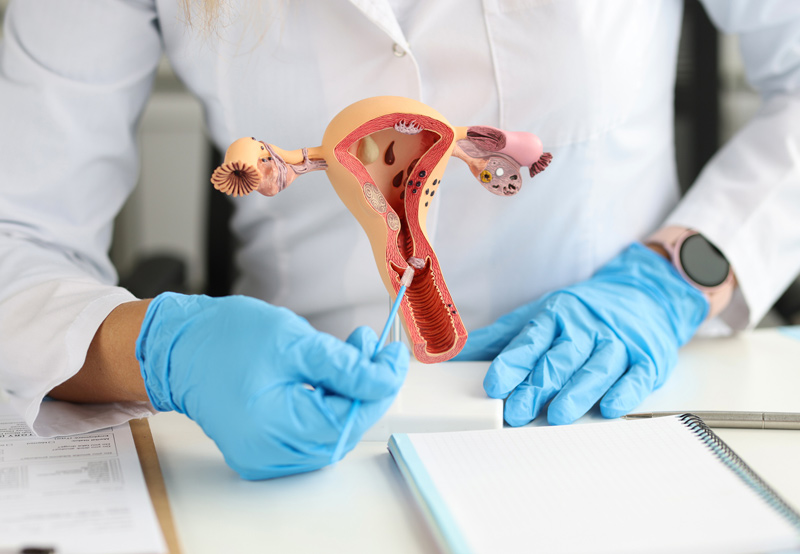

Dr. Chang performs numerous reconstructive urology surgeries, which include hysterectomy, salpingo-oophorectomy, complete vaginectomy, orchiectomy, clitoroplasty, and urethroplasty. Conditions that may require reconstructive surgery include congenital anomalies, such as vaginal agenesis and vaginal septum, and acquired conditions, such as radiation complications and labial hypertrophy.
Hysterectomy
A hysterectomy is surgery done to remove a woman’s uterus, or womb. The surgeon may also remove the patient’s fallopian tubes and ovaries. After surgery, women are no longer able to become pregnant and won’t have any menstrual periods in the future.

The three types of hysterectomies are:
- Total. The entire uterus and cervix are removed. The ovaries and fallopian tubes may also be removed.
- Partial, subtotal, or supracervical. The upper part of the uterus is removed. The ovaries may be removed.
- Radical. The patient’s cervix, uterus, tissue on both sides of the cervix, and the upper part of the vagina are removed. The ovaries and fallopian tubes may also be removed.
Salpingo-oophorectomy
During a salpingo-oophorectomy, the ovaries and fallopian tubes are removed. Surgery may be done laparoscopically, through a large incision on the abdomen or pelvis, or robotically.
Complete Vaginectomy
A vaginectomy is the removal of the vagina. Surgery is performed under general anesthesia. The surgeon will perform the procedure vaginally and make several incisions to separate the vaginal tube from the surrounding tissues.
Orchiectomy
During an orchiectomy, one or both of the testicles are removed. To begin surgery, the physician will cleanse the area and make an incision in the pubic area or in the scrotum. The spermatic cord may also be removed. The incision will be closed with stitches and the entire procedure will be complete within 30 to 60 minutes.
Clitoroplasty
A clitoroplasty is a surgical procedure done to create a clitoris that appears normal and retains sensation in the area. The two types of clitoroplasty are clitoral recession and reduction cliotoroplasty.
Urethroplasty
During urethroplasty, the urethra is repaired or replaced due to scar tissue that has formed inside. The surgeon will connect two ends of the urethra after cutting out the scar tissue. Or, the surgeon may borrow tissue from other parts of the body to rebuild a blocked urethra. Tissue may be taken from the mouth, genitals, or rectum.
Surgery For Other Conditions
Patients diagnosed with congenital anomalies, such as vaginal agenesis and vaginal septum, and acquired conditions, such as labial hypertrophy may need reconstructive surgery.
Women with vaginal agenesis may undergo vaginoplasty surgery. The procedure can be done through the following methods:
- Tissue graft
- A medical traction device
- A portion of the colon
Patients with a vaginal septum may undergo one of the following types of surgery:
- Resection or a longitudinal vaginal septum
- Resection of a transverse vaginal septum
- Resection of an obstructed hemi vagina
Labial hypertrophy may undergo a labiaplasty to remove excess skin and reshape the labia. Surgery is performed under general anesthesia.
Patients should speak to their physician to determine the benefits of surgery for their condition.
